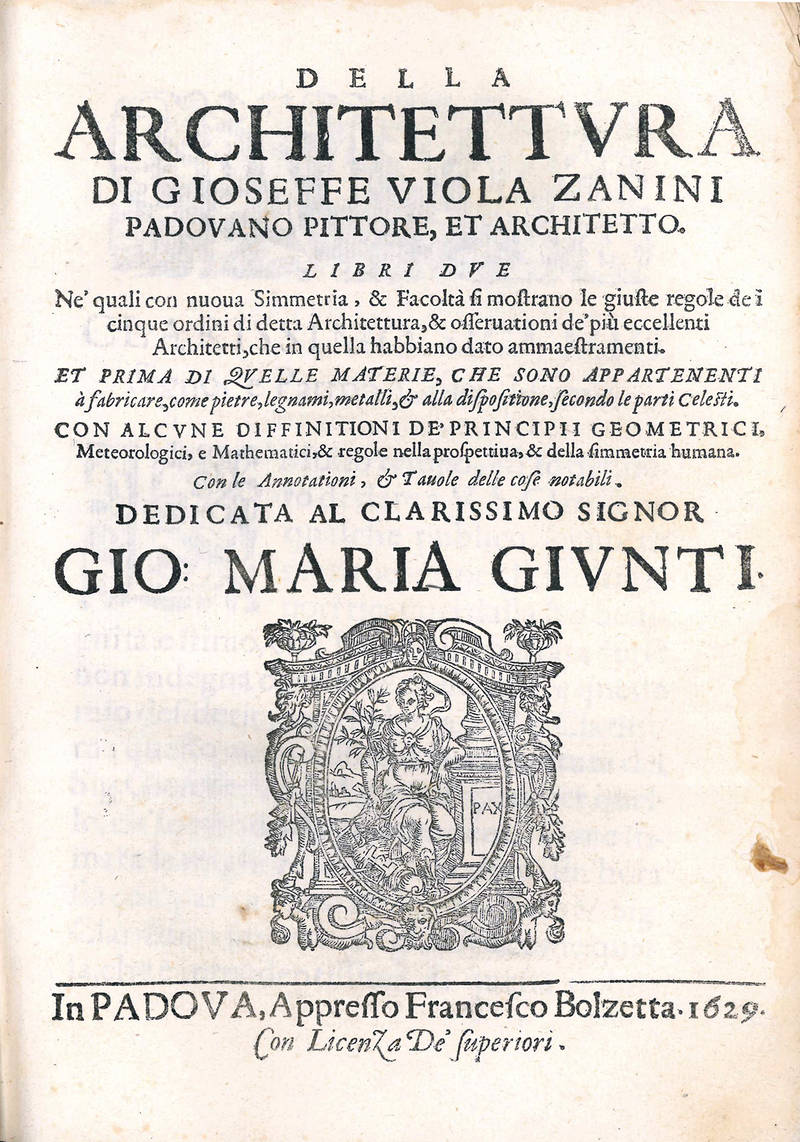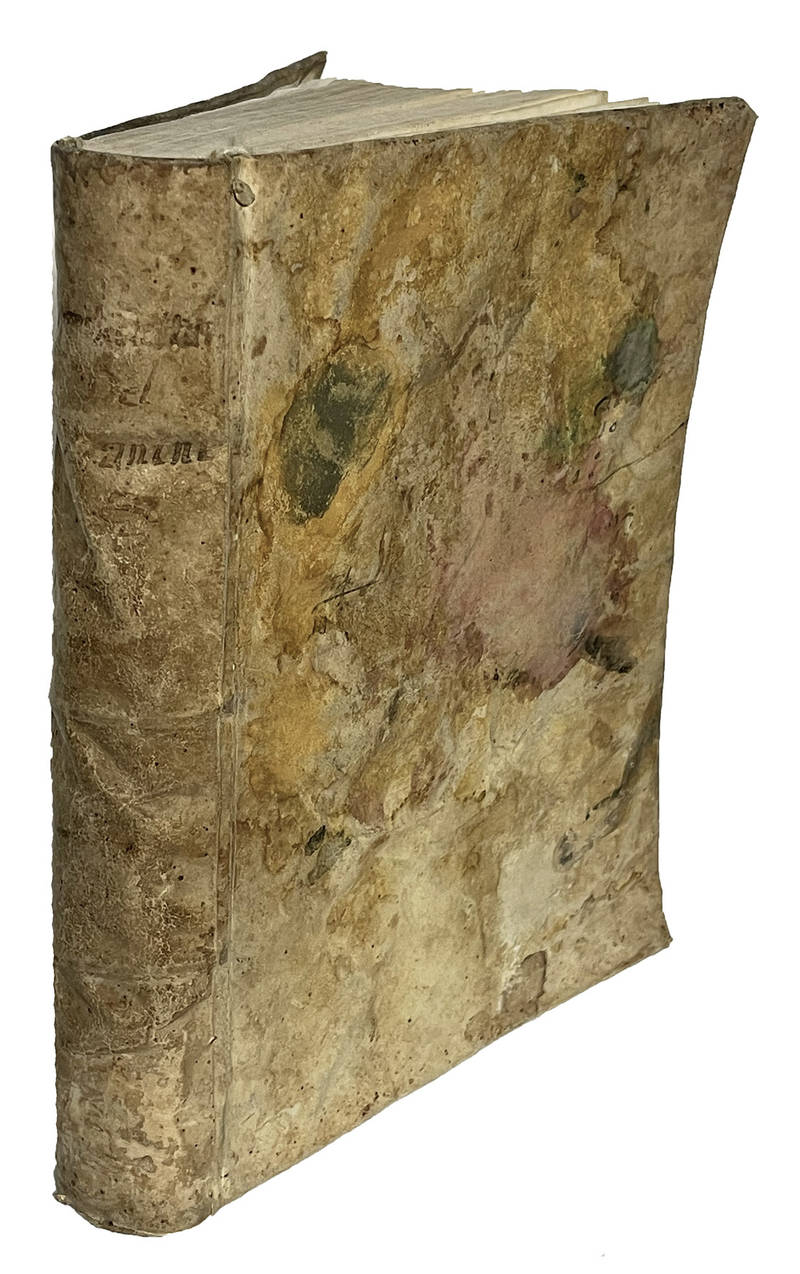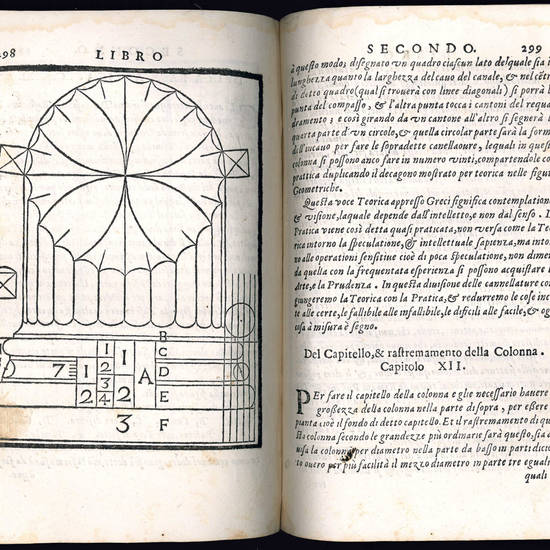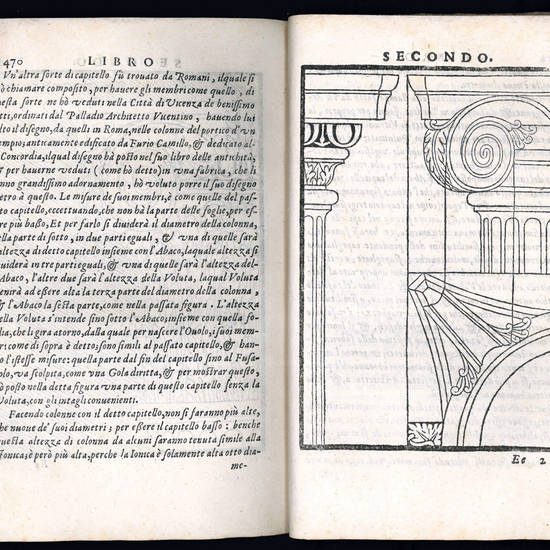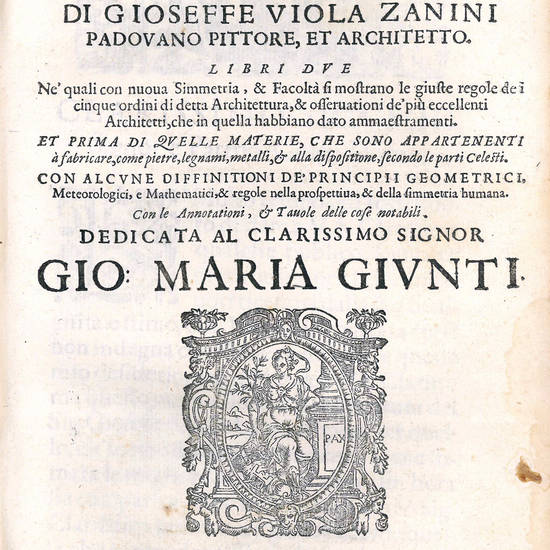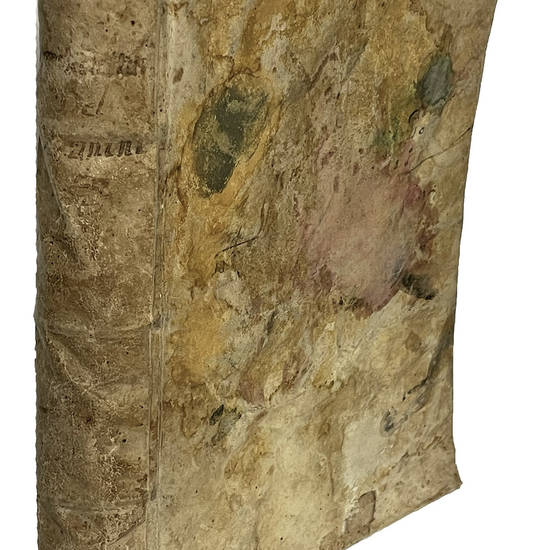Della architettura di Gioseffe Viola Zaninni padovano pittore et architetto. Libri due ne' quali con nuova simmetria, & facilità si mostrano le giuste regole dei cinque ordini di detta architettura, & osservationi de gli più eccellenti architetti, che in quella habbiano dato ammaestramenti. Et prima di quelle materie, che sono appartinenti al fabricare, come pietre, legnami, metalli, & della dispositione secondo le parti celesti. Con alcune diffinitioni de' principij geometrici, & discorsi metereologici, & mathematici, & regole nella prospettiva & della simmetria humana [legato con:] Della nuova simmetria de gli cinque ordini d'architettura di Gioseffe Viola Zaninni [...] Opera necessaria ne gli adornamenti delle fabriche, come colonne, cornici, base, capitelli, pedestilli, archi, intercolunnij; il tutto con approbate ragioni vien descritto, e mostrato nelli dissegni. Con le annotationi, & discorsi curiosi appartenenti all'opera
Autore: VIOLA ZANINI, Giuseppe (1575-1631)
Tipografo: Francesco Bolzetta
Dati tipografici: Padova, 1629
Two parts in one volume, 4to (mm. 216x158). [20], 252, [8], 253-497, [3] pp. Collation: πa4 a4 b2 A-Hh4 Ii2 χA42A-Hh4. At leaf χA1 begins, with its onw title page, the second part entitled Della nuova simmetria de gli cinque ordini d'architettura di Gioseffe Viola Zaninni […] Leaf χA4 is a blank. Printer's device on title pages, woodcut ornamental initials, head- and tail-pieces. With 93 full-page woodcut illustration in text. Contemporary vellum, inked title on spine (worn and stained, flyleaves renewed). Minimal marginal staining and browning, but a very good copy.
First edition (the work was reprinted in Padua in 1677). Giuseppe Viola Zanini was an architect, painter, cosmographer, and architectural theorist. This work, one of the most important technical treatise of the 17th century, is based on the Vitruvian system and strongly influenced by Palladio's example.
“Zanini's treatise is distinguished by its regional focus. Aimed at a local audience, Zanini's ideas were exemplified through buildings and works of art predominantly drawn from Padua and nearby north Italian cities. Zanini's main contribution is that he provides the first formal discussion of the principles of quadratura ceiling painting, a subject explored in great depth by other 17th century authors, such as Agostino Mitelli. This large work is divided into two books. The three sections of the first book deal with the origins of architecture, building materials, and the 'elements' of architecture. The second book is devoted entirely to the five orders of architecture. The third section of the first book concerns the harmony of parts and decoration of buildings, but also the layout of buildings and their orientation, instructions for finding water, wind, and the zodiac among many other subjects” (Millard).
“Despite its local focus this book was widely studied outside Italy, and Fréart de Chambray and Blondel wrote much on it, remarking the disorder in which the notions were exposed, but also noticing the good doctrine of the author. Inigo Jones is said to have possessed a copy of it. To this list of famous architects having taken advantage from this book the name of Luigi Rossini can now be added” (Kemp).
“Questo libro ripieno di ottime nozioni in ogni teoria, ed ogni pratica dell'arte è scritto da un autore che era molto nutrito dei migliori principii. Tutte le tavole copiosissime sono intagliate in legno, e frapposte al testo” (Cicognara).
Italian Union Catalogue, IT\ICCU\VIAE\000294; Riccardi I, 1985; Cicognara, 687; Vinciana, 4429; Fowler, 446; Comolli, IV, pp. 161-162.
[11007]

